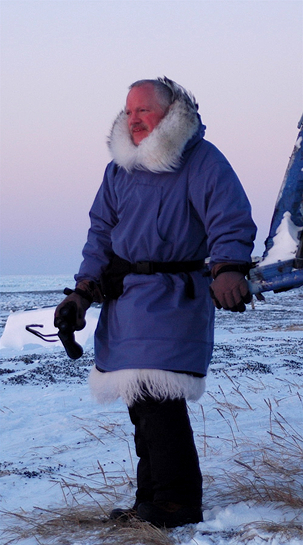I was walking on a frozen riverbank outside of Atqasuk, just south of Barrow, and I could feel the cold buffeting wind and see the tall snowy bluffs standing along the shoreline. The open tundra was on the other side of the Meade River and the sun hung just below a reddish-purple horizon.
It was the beginning of the Great Darkness, mid-November when the sun sinks below the horizon and will not be seen again until mid-January. Around noon the whole southern horizon becomes colorful for a few hours and sometimes a column of orange light will stand tall at its center.
Occasionally caribou herds slowly pass the village and are an impressive sight. They roam in numbers of a few hundred and contain smaller bands of deer that stick to themselves, each with their own large antlered Alpha male. The caribou can be seen for a couple of days and then vanish. Like a native tribe their freedom lies in being so close to Nature, I thought.
Understanding this I began to believe it is the tribes that will inherit the Earth. Wilderness cannot die. In the morning I often see a single bright star in the dark sky and it lies in the same direction that I walk to work.
The night contains the most ancient of clocks that measure and regulate our lives. Only true North has the strength of center to hold on to and support a circling starry sky.
Knowing that it would soon be dark again, I followed my tracks back down the frozen river to the village where children were sledding and digging snow caves. As night fell I retreated into the deep darkness of sleep. There I found my inner self lodged in a Nature that lies far beyond the harsh, cold winds of the North. Visions came to me from a barren, dimly lit wilderness, a land where only dreams like distant caribou roam freely.

